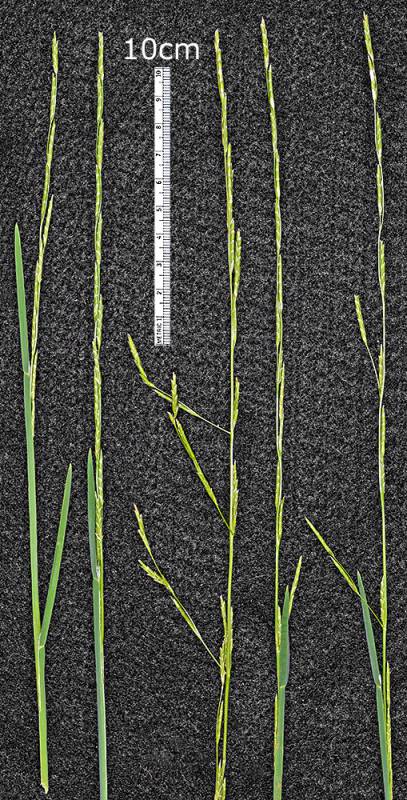Hosted by the University of Washington Herbarium, Burke Museum
Publication: Fl. Normandie 354. 1859.
Origin: Introduced from Europe
selected vouchers: WTU
Notes: FNA24: "Glyceria declinata is a European species that is established on the western seaboard of North America from southern British Columbia to southern California, and in northeastern Nevada, Arizona, the lower portion of the Mississippi valley, and on Long Island, New York. In Europe, it grows in low-calcium, acidic soils and tolerates drier conditions than other European species of Glyceria (Conert 1992). In Denmark, it tends to grow in areas that are highly trampled (Niels Jacobsen and Signe Frederiksen, pers. comm.). It is invading vernal pools in California.
In western North America, G. declinata has been confused with G. ×occidentalis. The most reliable distinguishing characteristics are the lateral lemma lobes of G. declinata and its rather short, straight panicle branches. The two species also differ in their ploidy level, G. declinata being diploid and G. ×occidentalis tetraploid (Church 1949). This is reflected in the length of their guard cells, those of G. declinata being 0.2–0.3 µm and those of G. ×occidentalis being 0.4–0.5 µm.
S.F. Hrusa found plants (Hrusa 13681, 15858, 16267; specimens in CDA) that have an annual growth habit. Apart from this, they fit within the circumscription of G. declinata, except that two of the three specimens have narrower (2–3 mm) leaves than normal; they were also collected relatively early in the season. For now, it seems best to include the plants in G. declinata pending a better understanding of their relationship to perennial members of the species."
References: (none)

